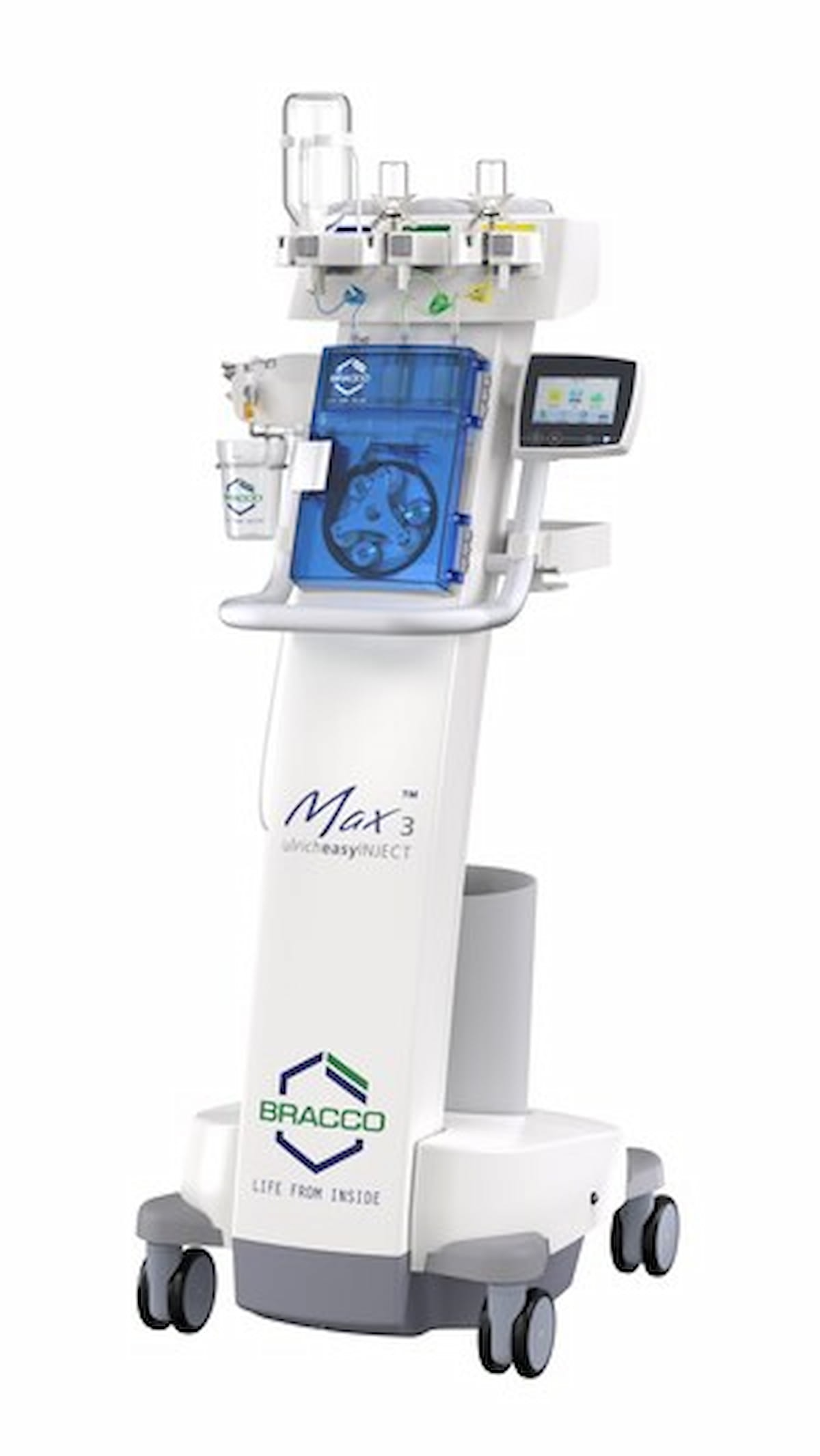FDA Clears Syringe-less Injector for MRI Contrast Media
The Max 3 syringe-less injector reportedly offers improved efficiency and intuitive features with contrast media use for magnetic resonance imaging.
The Food and Drug Administration has granted 510(k) clearance for the Max 3™ contrast media injector for use in magnetic resonance imaging (MRI) exams.
Offering ease of use features to foster workflow efficiencies, the Max 3 is a syringe-less injector, according to Bracco Diagnostics, the manufacturer of the modality, which was developed in collaboration with Ulrich Medical.
The syringe-less contrast media injector Max 3 garnered 510(k) clearance from the Food and Drug Administration (FDA) for use in magnetic resonance imaging (MRI) exams. (Image courtesy of Bracco Diagnostics.)

Emphasizing direct injection from original contrast media vials, Bracco Diagnostics highlighted the Max 3’s combination of the Easy-Click Cassette flex and SafeConnect. The company noted these features enable dedicated connection to patient tubing with protection from retrograde contamination. The connector with the Easy-Click Cassette can be utilized within a 24-hour period or up to a maximum of 96 bottles of contrast media, whichever occurs first, according to Bracco Diagnostics.
The company pointed out that the lack of power cables with Max 3 enable convenient positioning of the device within the MRI room. In addition to eliminating the need to refill syringes, Bracco Diagnostics said use of the Max 3 reduces disposable plastic waste.
"We're thrilled to bring an intuitive, easy-to-use, and environmentally friendly solution to the radiology community in collaboration with Bracco," said Klaus Kiesel, the chief executive officer of Ulrich Medical. "Together, we're taking MRI innovation to the next level in health care."
Could Ultrafast MRI Enhance Detection of Malignant Foci for Breast Cancer?
April 10th 2025In a new study involving over 120 women, nearly two-thirds of whom had a family history of breast cancer, ultrafast MRI findings revealed a 5 percent increase in malignancy risk for each second increase in the difference between lesion and background parenchymal enhancement (BPE) time to enhancement (TTE).
MRI Study Suggests Shape of White Matter Hyperintensities May Be Predictive of Cognitive Decline
April 7th 2025Emerging research demonstrated that cognitive declines in memory, executive function and processing speed domains were associated with irregular shape of periventricular/confluent white matter hyperintensities.
Can Abbreviated MRI Have an Impact in Rectal Cancer Staging?
April 4th 2025Abbreviated MRI demonstrated a 95.3 percent specificity for rectal cancer and provided strong agreement with the full MRI protocol for T staging and detection of extramural venous invasion, according to newly published research.